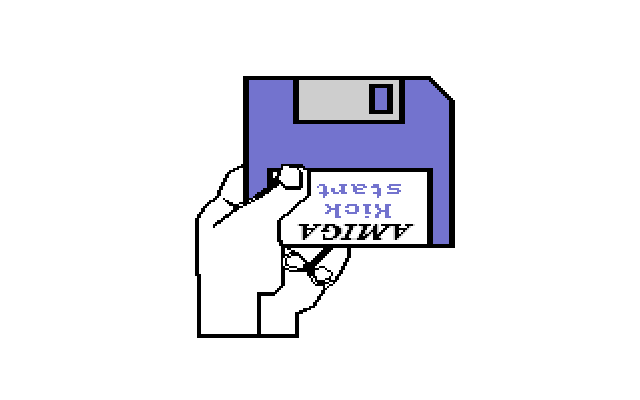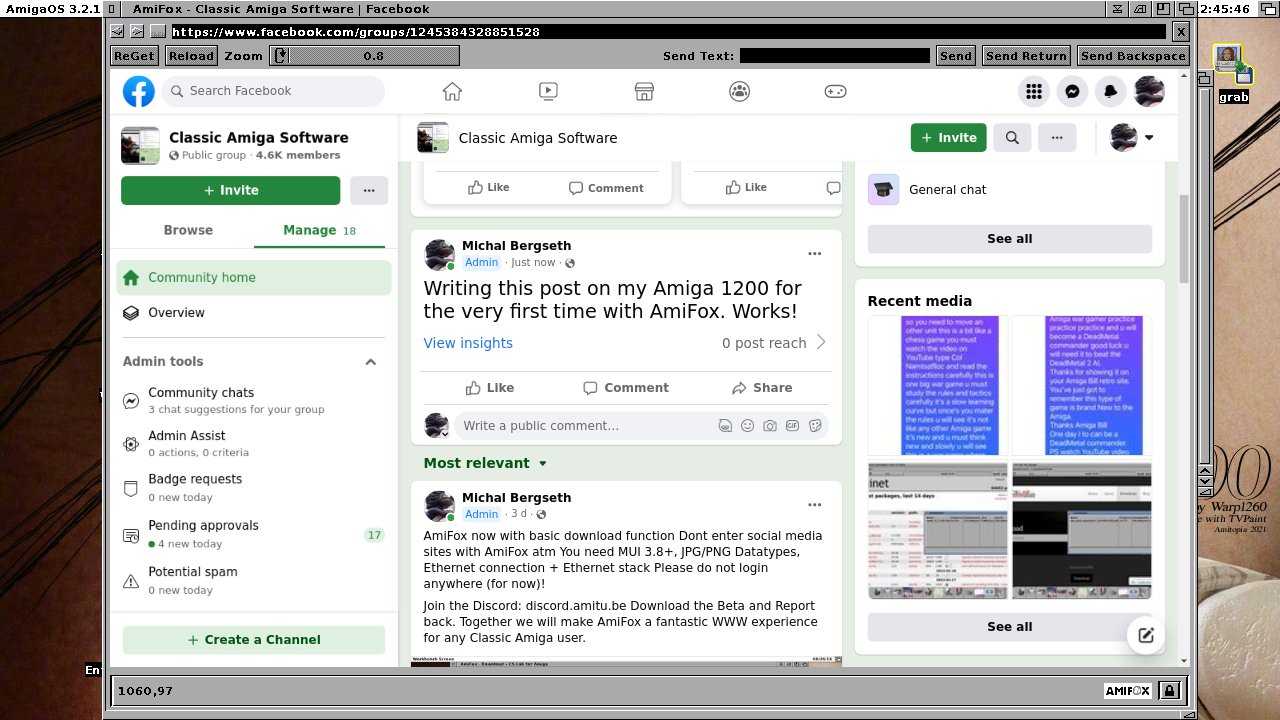Is Atari really better for making music than Amiga? How to make all Amigas play 14-bit music without using the known AHI hacks? What do you need to play MP3s? These and other questions answered below in this Sound FAQ. Get ready to get your jaw dropped as many rumors are crushed once again in this FAQ. It is needed as the world should know this.
Let’s do this!…
#1 – Who made the Sound chips used in the Amiga?
Glenn Keller is the designer of the Paula sound chip that you can find in every Amiga model released by Commodore. Only minor tweaks were done to AGA Amigas versus OCS and ECS.
Watch the Interview with Glenn Keller Here
Which Amiga Computers uses the Paula Soundchip?
All of the Amiga computers made by Commodore and ESCOM got it. Amiga CDTV multimedia computer and the Amiga CD32 console got it too. The Amiga 1300 from Power Computing also got it also. DraCo is the only Amiga compatible 68k computer without a Paula sound chip.
What are the Paula Amiga Sound specifications?
When using the Paula chip on any Amiga there is almost no CPU usage. The CPU tells Paula where in Chip RAM the sample it is playing is stored, how long to play it for, and what rate to play it at. Then Paula is able to play the sound in its entirety without any intervention from the CPU.
#2 – Is 8-bit all that the Amiga can do?
No! The real feature is that all Amigas can do 14-bit. OCS output is 22kHz while AGA output is 14-bit like 56Khz. Most know Amiga to make 8-bit music. But this is wrong. It plays the same sample on two channels with different volumes. Detailed documentation, as well as the calibration program, is in the Play16 archive on Aminet. You need 68020 or higher to be able to play high-quality sounds.
Amiga Paula Chip Playing 14-bit 44Khz
Is the Amiga capable of doing MIDI?
Yes. But only one Amiga computer by Commodore comes with MIDI as standard. All of the Amiga CDTV multimedia computers got it.
On the other Amiga computers such as Amiga 500 or even the latest Amiga 4000T, you need to connect an external MIDI box to them to use external keyboards. This can be done with applications that can use MIDI. In the video below you can see how MIDI is supported by OctaMED Professional v4. This amazing tracker supports using MIDI. OctaMED works with various external MIDI boxes as demonstrated in the video, which is pretty neat.
Mike Clarke and Tim Wright used Bars & Pipes Pro MIDI sequencer on their Amiga 1200 machines from 1994 to 1999 at Psygnosis for all of their music-making. This includes all of the big early Playstation games that Psygnosis worked on like Wipeout, Formula 1, Tenka, and Colony Wars. Just think of it. Amiga 1200 was used for making music for the original Wipeout game! That is pretty huge.
Mike also writes in his comment in the video above that he continued to use his Amiga for music-making until 2010 when his Amiga hard drive stopped working. Still, nothing comes anywhere close to Bars & Pipes for MIDI editing he also mentions. Amiga’s music with MIDI capabilities deserves much more love for sure.
#3 – How is it possible for Amiga to play 14-bit?
When the Amiga plays the same sample on two channels with different volumes, it is able to play 14-bit tones to you. The higher 8bits are played with full volume as usual. The lower bits are played with volume 1. Then the Paula hardware mixes the channels together.
68060 100MHz Playing 14-bit MP3s while Multitasking
Any Amiga can do 14-bit as demonstrated in the video above by Amitopia TV. The Amiga chipset has two analog lowpass filters after the DAC. The stronger one with an effective frequency limit around 7 kHz (also called “LED filter” in some places) can be switched off. The second RC lowpass filter is fixed. That one is responsible for the “muffled” sound when replaying high rate content like MP3 or WAV.
Please note that it takes some configuration to get the 44 Khz (up to 57 kHz) sampling rate out of the Amiga. Starting with ECS (Amiga 500+, Amiga 600, and later), the Amiga can play at more than approx. 28 kHz. The trick is that the Amiga chipset must be in a double scan display mode (DBLPAL, Productivity etc.).
Playing 14-bits music on the Amiga is not a hack, as that’s an urban myth. Paula was designed to be like this.
How is it possible to turn on a 14-bit sound by default?
When you have an RTG card inside your Classic Amiga. That is the easiest way. You can turn on 14-bit in Picasso96 like this:
When running Picasso96, only a single environment variable needs to be set (from CLI):
SetEnv EnvArc:Picasso96/AmigaVideo 31kHz
With this setting, you can use higher sampling rates (after a reboot). AHI will honor this setting, too (and actually check for it before switching high sampling rates on). The better CPU you have, the better it is when using AHI for this. But AHI is really not needed for 14-bit to be activated on any Amiga computer.
If you don’t have RTG your Amiga needs to show DBLPAL or DBLNTSC modes. DBLNTSC feels quite a lot faster than DBLPAL if you have a TV or Monitor that can handle it. You can also use a Productivity mode too.
Which Amiga Music Players supports 14-bit output?
- Play16 on AMINET (14-bit WAV)
(68020+) - SongPlayer on AMINET (14-bit WAV and MP3)
(68020+ for WAV)(68060+ for MP3 playback)
(AHI can be activated!)
(Requires MUI 3.8) - EaglePlayer 2.06 on AMINET (14-bit MOD, WAV and MP3++)
(68060+ for MP3 playback)
(AHI can be activated!)
#4 – 16-bit soundcards on Classic Amiga?
Yes. This is fully possible as all Classic Amiga’s are computers like any Mac or PC computer with expansions.
There are various solutions for getting 16-bit soundcards on solutions on the Amiga. There are however various difficulty levels in how to install them and what type of upgrade solution is chosen by you. 16-bit on Classic Amiga can be added by adding a Vampire or Warp accelerator.
With pure CPU accelerators such as Buffee and TF products, you will need a Clockport, Zorro, or PCI soundcards as an addon. These soundcards should also work with Vampire and Warp accelerators too. It depends on how serious your about making or listening to music on your Amiga. Many of the soundcards that you add can also mix the sound from Paula too. It depends on the soundcard.
How to use music applications with 16-bit soundcards on Amiga?
Once they are installed. You should get drivers with the soundcard. There is also AHI that you can use with the soundcards. I find AHI to be way more useful for soundcards than for using with Paula. It creates too much noise and it does require more CPU.
Does Amiga support DSP on the soundcards?
Yes. Many of the soundcards for Clockport and Zorro does have a DSP such as the DelfinaDSP soundcard. I urge anyone having a DelfinaDSPz2 for Zorro-equipped Amigas to overclock it from 40MHz to 66MHz or higher. Do this at an Amiga retailer that can do this for you as it will benefit you a lot. Not only let it you play better quality MP3s but you can also mix way more channels too.
Back in the day, I did beta testing of DelfMpeg for my DelfinaDSPz2 soundcard that I had for my Amiga 4000. I got so much in love with the sound quality that this player made that I changed my nick to AmiDelf. I am very sensitive to sound and this changed my life.
Including making DelfMpeg, Michael Henke also made DelfinaMpeg.device that can be used with many players supporting AHI. With this, I used SongPlayer, AmigaAMP, and AMPlifier playing MP3s with almost no CPU load. For Amiga owners with 68030, this is a nice way to get great modern music on your Amiga if you don’t want to do a full upgrade of your Amiga.
There is also a Melody 16-bit soundcard for Zorro II with DSP that got the same features.




